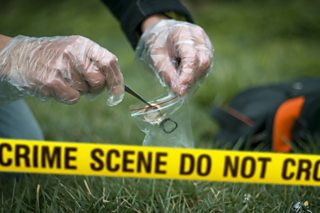Polygraph tests
Written by Dr Julia Shaw, co-host of Bad People on 91热爆 Sounds.
On episode seven of Bad People we talk about the fascinating case of Chris Tapp, who was the suspect in a US murder case in 1996. As part of his interrogation, Tapp was given seven polygraph tests. By the end, Tapp even asked for one of them himself because - exhausted and confused - he was hoping that the polygraph could tell him whether he was guilty or not. On the podcast, Sofie Hagen and I talk about the case, his conviction, and his eventual exoneration.
Tapp’s case is a great example of how polygraphs can contribute to wrongful convictions. So it’s fair to say that I was concerned when I came across a number of articles recently stating that the polygraph was going to be used more frequently in the UK in the future.
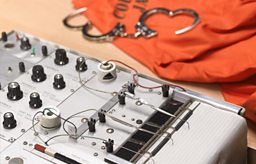
Polygraphs for counter-terrorism
, which is due to have a in late September 2020, will enable “the use of polygraphs (lie-detectors) for terrorist offenders”.
In the , Policy Executive Gillian Mawdsley writes that "The imposition of such conditions is now to be extended to Scotland” partly because there is "a need for consistency of sentencing in terrorist cases across all jurisdictions”. In other words, this is likely to force the inclusion of mandatory polygraph testing by those who make licensing decisions.
This is viewed critically by many, as polygraphs are currently not used in Scotland for offender management in any context, Scotland has not been consulted on this inclusion in the Bill, and the Law Society of Scotland has explicit concerns about the use of the polygraph.
Upon hearing about this proposal, which would force Scotland to adopt the measure, Scottish Justice Secretary Humza Yousaf last week “We don’t use ‘Jeremy Kyle’ polygraph tests in our Justice system in Scotland, never have…This measure won’t keep us safe.”
Yet, Johnathan Hall QC, the UK’s Independent Reviewer of Terrorism Legislation, that he had come to the conclusion that “polygraph testing is likely to be a valuable additional means of gathering information relevant to terrorist risk for terrorist offenders on licence”.
The Bill proposes the use of the polygraphs for people who have already been convicted of terrorist offences, to consider whether they should be released, or how they should be managed after their release on licence.
Most prisoners in the UK are released from prison into the community before their full sentence is up, and then have certain ‘ they need to stick to under supervision. In line with this, as , “the purpose of testing is to monitor the person’s compliance with the other conditions of their licence or to improve the way in which they are managed during their release”.
In other words, this is intended to help spot people who are lying about whether they have breached the conditions of their release, and to better spot people who represent a high recidivism risk so they won’t be released into the community in the first place; people like the perpetrator of the London Bridge attack, Usman Khan, a convicted terrorist who was on licence when he killed two people.
As well as concerns about the use of polygraphs for this purpose, there are some concerns that this Bill could open up loopholes to use polygraph evidence more widely in terrorist prevention and investigation measures.
The big question that underlies the debate around this Bill is: Should we ever use the polygraph? The answer is less clear cut than you might think.
Do Lie Detectors Work?
To call polygraphs pseudoscientific is incorrect. They are scientific, in that they reliably measure , including things like blood pressure, heart-rate, breathing, and Galvanic Skin Response (changes in sweat gland activity). This means that polygraphs are very good scientific tests of a stress response.
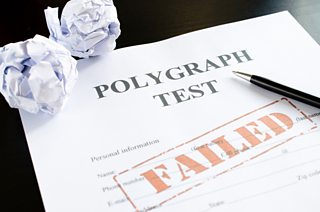
Polygraphs are very good scientific tests of a stress response.
The problem is that we don’t call them ‘stress detectors’, we call them ‘lie detectors’. Calling them lie detectors, makes the implicit assumption that polygraphs are seismographs of the mind, being able to identify when we quiver and shake, therein uncontrollably revealing when we are lying.
Although lying is often stressful, lying and stress are not the same. Any practiced liar, actor, or poker player can tell you that there are ways to lie without looking or feeling stressed. That’s because stress is a proxy of lying, at best.
Because the polygraph relies on good interview methods, and the results require interpretation, human error can also seep into the process. Specifically, concerns have been raised by about polygrapher overconfidence: “Although they often acknowledge that the test is not always accurate, they often seem to think that other examiners make incorrect judgments rather than they themselves. You never hear stories from polygraph examiners where they got it wrong.” This might lead to polygraph evidence carrying undue weight in offender management decisions.
Perhaps also useful to consider is that polygraphs are not a modern tool. Although they are mostly digital now, the physiological channels that the polygraph measures haven’t changed much since . And, probably for as long as the polygraph has existed, there have been
Polygraphs neither provide direct access to lies, nor are they infallible. But this is all common knowledge, especially to polygraphers. The question that we should be asking isn’t whether polygraphs are infallible lie detectors but whether they might be helpful in any way for an investigation.
When should we use polygraphs?
Polygraphs are used for multiple reasons in various parts of the world, but they aren’t as widely accepted as TV shows make them seem.
By showing when someone is stressed, polygraphs can help guide interviews and see physiological responses that are not otherwise readily visible.
For example, according to the , in the UK “statements made while participating in the polygraph session, and any physiological reactions during the polygraph examination are currently excluded from use in criminal proceedings against that individual”. However, the polygraph can be used as part of an investigation, or in some other contexts in the UK – including for managing registered sex offenders and perpetrators of domestic violence.
Polygraph interviews are structured specifically to reveal stress in response to certain information that someone might be motivated to conceal. This can include ‘guilty knowledge’ that places someone at a crime scene, or ‘concealed information’. By showing when someone is stressed, polygraphs can help guide interviews and see physiological responses that are not otherwise readily visible.
Part of why polygraphs work is because people believe they do. This has been illustrated many times in , where people are more truthful when they are attached to a useless machine because they think it can tell when they are lying. It is a criminal justice version of the placebo effect.
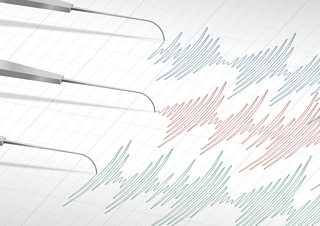
Part of why polygraphs work is because people believe they do...It is a criminal justice version of the placebo effect.
Polygraphs also don’t have to be amazing to be useful. Professor Aldert Vrij, a highly respected deception detection researcher at Portsmouth, wrote in an that “professional lie catchers, such as police officers, are generally rather poor at distinguishing between truths and lies”. Indeed, it’s widely accepted that many professionals are at spotting lies.
To provide some usefulness, a polygraph really just needs to be better than humans, which isn’t very hard.
This means that polygraphs are potentially useful for getting more, and more accurate, information from people. But, is this potential utility enough to justify the use of polygraphs when making important decisions within the criminal justice system?
Not the intended use
Although Johnathan Hall QC is recommending the extension of the polygraph, he admits that “the use of polygraphs for terrorist offenders will not have been piloted beforehand”. This is a problem, because we don’t actually know whether the polygraph is good at identifying when someone is a high risk to potentially commit another crime.
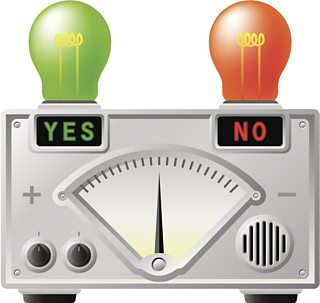
We don鈥檛 actually know whether the polygraph is good at identifying when someone is a high risk to potentially commit another crime.
Hall has suggested that this is ok, because a pilot study on sex offenders found the polygraph to be a useful tool. In that was done before mandatory polygraph testing for adult sexual offenders on probation was introduced in the UK, researchers found the polygraph to be helpful for getting more details and making decisions.
The problem is that we don’t have any evidence that it works in the context of terrorism offenders on licence.
Professor Aldert Vrij, said in 2019 “To use sex offender testing as a justification to use it in terrorist cases is odd… Of course, it gets further away from its original design as the ‘crime in question’ is no longer a crime committed in the past. To simply introduce the test in an entirely different setting is too far stretched”.
This is even more of a stretch, because the application of the polygraph to sex offenders is , so this use has very limited evidence as well.
Just as the incorrect use of the polygraph can result in wrongful convictions, like in the case of Tapp, it can also lead to other kinds of miscarriages of justice like keeping people imprisoned for longer than is necessary – which can lead to human rights violations – or placing too much confidence in a tool that doesn’t work – which can lead to high-risk individuals being given more unmonitored freedom of movement than is safe.
It’s not that the polygraph can’t work when applied to terrorists on licence. It might. But we need research on this specific setting to make an educated decision. A hunch isn’t good enough for such an important issue.
Dr Julia Shaw
Dr Julia Shaw is a research associate at University College London and the co-host of the Bad People podcast on 91热爆 sounds.
She is an expert on criminal psychology, and the author of two international bestsellers “Making Evil: The Science Behind Humanity’s Dark Side” and “The Memory Illusion: Remembering, Forgetting, and the Science of False Memory.
Her website: www.drjuliashaw.com, and twitter @drjuliashaw


